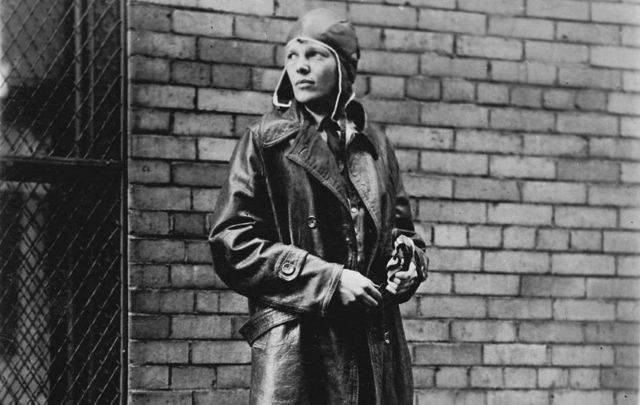On May 21, 1932, Amelia Earhart became the first woman to fly solo, non-stop across the Atlantic Ocean landing in Co Donegal.
The feat had been famously achieved by Charles Lindberg five years earlier when he flew from New York to Paris.
On May 20, 1932, Earhart, from Atchison, Kansas, took off at 10:51 pm (Irish time) from Harbour Grace, in Newfoundland. Her destination was to be Paris but her flight was disrupted by a petrol leak which forced her to land in Ireland.
According to the Irish Press, Earhart landed “in a small field on the side of a hill overlooked by the Donegal Mountains, near Derry” at 2 pm on Saturday, May 21.
The local newspapers at the time commented that as the people in the surrounding area rushed to see what the commotion was and to greet the pilot they said that Earhart did not look tired.
The owner of the field, a Mr. Gallagher, drove Earhart to the city so that she could make a telephone call to her husband. Earhart spent the night with the Gallagher family in Springfield, Donegal.
The Sunday Independent remarked that Earhart, on that day, had broken three world records – she was the first woman to cross the Atlantic, she held the longest ocean flight (15 hours,) and she became the first person to fly the Atlantic twice.
Before Earhart continued her journey, she found a toy shop and bought some mementos for her new friends, the Gallagher children from Donegal. She then continued her journey on to London and then, finally, to Paris.

Love Irish history? Share your favorite stories with other history buffs in the IrishCentral History Facebook group.
Following her adventure, Earhart was rewarded for her bravery and determination. She received the American Distinguished Flying Cross, awarded to her by President Hoover. The American Senate had to pass a special Bill to authorize the award which recognized her solo flight across the Atlantic.
Throughout her career, Earhart continued to break records. In 1935 Earhart became the first aviator to fly solo from Honolulu, Hawaii to Oakland, California. And between 1930 and 1935, Earhart had set seven women's speed and distance aviation records in a variety of aircraft including the Kinner Airster, Lockheed Vega, and Pitcairn Autogiro.
Sadly, however, in 1937 Earhart had moved onto a new challenge to circumnavigate the globe. On July 2, accompanied by her Irish American navigator Fred Noonan, Earhart’s plane went down over the central Pacific Ocean, near Howland Island. To this day her life and her disappearance continue to fascinate.
* Originally published in 2018. Updated in May 2023.




Comments